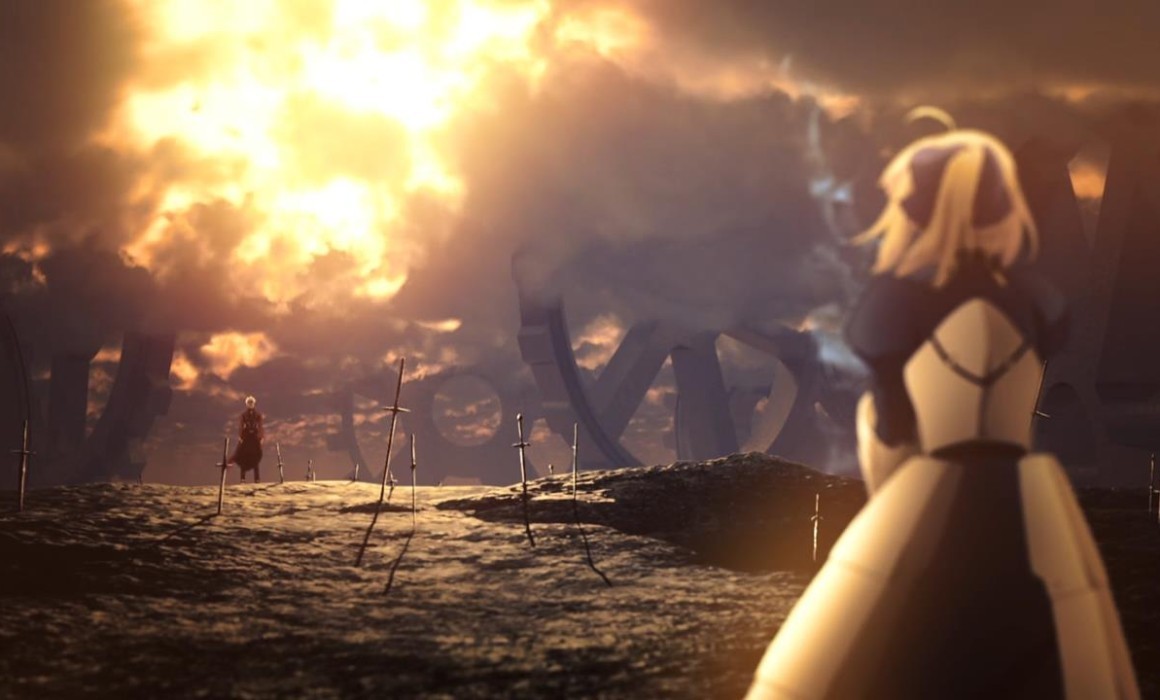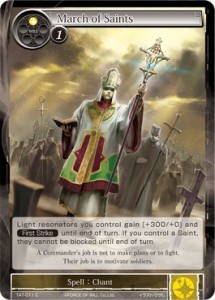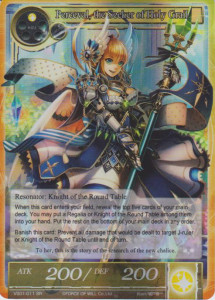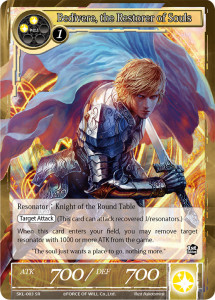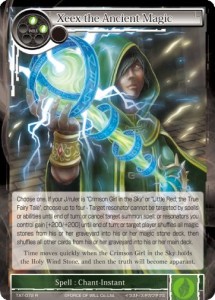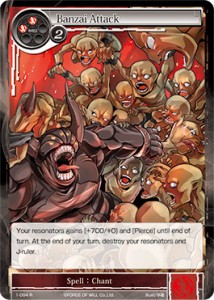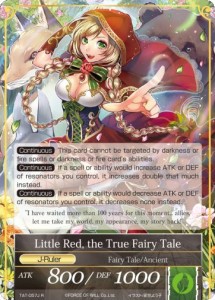What’s Your Wincon?
When people ask me to critique their Force of Will deck, this is the first question I usually ask. When given an immediate answer, I’m able to assess their deck with the goal of making it as competitive as possible. When I’m not, it’s very hard for me to provide input on their deck. While it seems obvious every deck needs a wincon, you’d be surprised how many people cannot answer the question or have to spend some time thinking before more or less answering, “do some powerful things and grind them out.”
The Inevitable State
There are plenty of ways to do something powerful in FoW but lose the game soon after. To prevent this, decks should aim to reach a state upon which the game is basically won (inevitability). Here are inevitable states three major archetypes from different formats aimed to achieve throughout the game’s history:
Aggro/Tempo – Put Them On a Clock
Due to the way red cards are designed in FoW, most aggro decks are actually tempo decks since resonators like Lancelot and Little Dread have board control elements built into them. This is why I often group aggro and tempo together.
Back in the Grimm block era, there was a deck called Oddgro showcasing the power of one-drops backed by tempo cards like Dreams of Wonderland. The deck was called ‘Oddgro’ because it featured odd-costed resonators such as March Hare, Tinker Bell, and Oz. This meant Dreams of Wonderland would always return the targeted resonator (often times a blocker) to the owner’s hand, forcing damage through. Sometimes this means a Tinker Bell attack would deal 8 damage or more, not to mention the opponent would lose tempo because the blocking resonator would need to be replayed again (for more information on tempo, read my article Gaining Parity).
The deck aimed to whittle down the opponent’s life low enough for a Rapunzel to finish the game with flying and multiple attacks or to create a situation where the opponent had too few blockers to prevent a lethal series of combat phases. The latter was accomplished due to the fact that Dreams of Wonderland only costs 1 while most of the Oddgro deck was comprised of resonators that also cost 1, allowing the Oddgro player to continually flood the board with resonators each turn while the opponent simultaneously lost board presence.
Here is the Oddgro list Vincent Paglia used to win WGP California in 2015:
Ruler: Grimm, the Fairy Tale Prince
Aggro decks in current times aim to create a situation where the opponent must make suboptimal blocks in order to stay alive, eventually reaching a point where the defending player runs out of resources or becomes open to a finisher card such as Split Heaven and Earth.
Control/Midrange – Outvalue and Race
After the release of Vingolf (part of the Grimm cluster), control decks dominated the Italian meta thanks to the printing of Vlad Tepes, a ruler with a built-in wincon in its ability. The Vlad deck aimed to control the board using value resonators like Carmilla and removal spells like Flame of Outer World while being backed by counterspells such as Exceed. It won using excess stones to drain the opponent’s life every turn, eventually sapping them for lethal. The advantage of this deck is the only board state it needs to establish inevitability is one where it is at least even on the field (does not need to be winning on board) while having a high number of stones to rest for Vlad’s ability since most decks do not have a reliable source of lifegain to offset the drain. Resonators such as Fiethsing accentuate the deck’s ability to stave off damage while increasing the amount of will used to sink into Vlad’s ability at the same time.
Here is the Vlad Control list Federico Zoppini used to win an Italian RGP in 2015:
Ruler:Â Vlad Tepes/Vlad Tepes (J)
The meta as of this time of writing is not friendly toward control decks due to the presence of Reflect/Refrain, a J-Ruler who can counter non-resonator spells using abilities (including counterspells like Xeex and Absolute Cake Zone). In addition, many threats in the game currently cost 1 while most counterspells cost at least 2, making control decks based around counterspells very inefficient. The viability of an archetype in a given format usually depends on what cards are powerful enough to warp the metagame.
Combo – Inevitable Powerful Synergy
The term combo is slightly tricky to use because every deck utilizes combinations of cards in the hopes of assembling an inevitable board state. The use of the word combo to define an archetype is based around the idea that extremely powerful combinations exist that can usually win the game from any given state. For example, using Guinevere to put a Yamata-no-Orochi in the grave and then returning Yamata to play using Book of Eibon is often game-winning.
Not all combo decks in FoW are based around putting a single large threat into play. Some decks, like Alice’s World, aim to win by assembling a board of different resonator types and then taking extra turns. Even if the World player fails to win in those extra turns, the resulting board state when the combo is finished can be impossible for the opponent to recover from if he or she is not also playing a combo deck.
Here is the R/R Alice’s World deck Zachary Tufford used to win the ARG King Con event in 2015:
Ruler: Reflect, Child of Potential/Refrain, Child of Convergence
Combo decks in Force of Will tend to also embody another archetype – there are very few ‘pure combo’ decks. For example, Tufford’s list above can beat the opponent down using Gwibers and Adombralis (a midrange strategy) without actually casting Alice’s World. To learn more about Tufford’s list, check out the FoWTavern article about the deck.
Choosing an Inevitable State
In a competitive tournament, the deck that is capable of assembling an inevitable state faster than other decks will generally win more games. Therefore, you should look toward building states with minimal dependencies.
In general, a good inevitable state has no more than 2 specific cards. For example, Yamata and Book of Eibon are specific, but the number of ways to put Yamata in your grave are numerous (Guinevere, Forty Thieves, Nyarlathotep) and would not count as specific cards as long as the deck runs plenty of methods. However, this is just a general rule for specificity. Many inevitable states in this game (such as Alice’s World combo) rely on factors other than just specific cards. The best way to determine if a deck is competitive in a format is to playtest and get a ‘feel’ for both its speed and reliability.
Consistency and Tech (Disruption)
Every competitive deck aims to assemble an inevitable game state as fast as possible. For a deck to accomplish this, roughly 70% of the deck needs to be focused on increasing its consistency to build that state. The other 30% is typically reserved for ‘tech’ cards to disrupt opposing strategies, some of which happen to be faster in a vacuum.
Two important terms here are stability and forced synergy. Reaching stability is establishing a state where the opponent does not want to damage you. This often occurs when the board is under control and an attack would simply lead to a loss of resources or a lethal counterattack the following turn. Most players add ‘tech’ cards to a deck help it reach stability against faster wincons – control, for example, is slower than aggro when it comes to who can close out a game the fastest. Tech cards are based on the idea that an inevitable game state is achieved first by disrupting the opponent’s ability to construct his or her own inevitable state. However, where many new deckbuilders go wrong with ‘tech’ cards is when they also slow down their own strategy to the point where they are not making any significant gains. This is called forced synergy.
As an example, a lot of players new to the game ask me what deck can put on pressure but also play control cards like Xeex, the Ancient Magic. The problem with building a deck like this is that these counterspells are tangent to the aggro player’s central plan of applying pressure. Obviously, using counterspells means the opponent won’t be able to put more blockers on the board, but at the same time it means the aggressive deck isn’t building a board state. If at any point the aggro deck is behind, counterspells do not accomplish much except stall the game. In addition, cards that apply pressure typically require will to cast, creating an awkward situation where the aggro player does not have any unused stones to produce will on the opponent’s turn. This results in dead cards – cards that sit in your hand and cannot be used because your deck is not designed to use them consistently. Ideally, tech cards are chosen based on how well they accomplish the necessary job while minimizing the amount of ‘slowing down’ caused to the deck. A few exceptions exist, and these are generally cases where not disrupting a combo can outright lose the game, such as not stopping a Yamata entering the field from Book of Eibon or Genesis Creation.
Build For Inevitability
Every deck is capable of generating states of inevitability. However, the best decks are built toward consistently achieving specific states with minimal requirements. This is why the ‘do some powerful things and grind them out’ strategy fails on a general level. If a deck does not aim to focus on a wincon, then it falls upon the player to use the deck’s card choices to construct an inevitable state. While this can sometimes happen, often an advantageous state is achieved instead of an inevitable state – a strategy that typically loses to any deck that establishes inevitable states by design.
If you are building a deck for competitive play, the first question you need to be able to answer is, ‘What is the wincon?’ This will help you build the core of the deck since wincons revolve around specific game states. The rest is simply tweaking numbers and evaluating what tech cards need to be included so the deck can compete in the meta.

